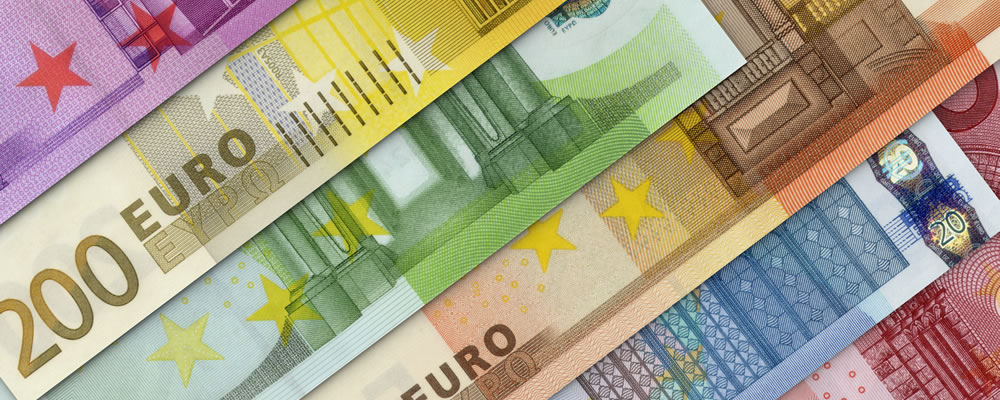- Euro gained ground following recovery in German industrial production – Output rebounded after weakness in May
- EUR GBP exchange rate remained on stronger footing following BoE easing – Confidence in UK economy limited in absence of supportive data
- Better-than-expected US payrolls boosted US Dollar demand – Initial gains reversed as markets remained doubtful over possibility of 2016 Fed rate hike
- German trade figures boost Euro further – Trade surplus widened markedly in June
Strong German Trade Surplus Boosted Euro (EUR) Demand
Confidence in the single currency (EUR) was shored up further on Tuesday after the German trade surplus for June was found to have widened further than forecast. This suggested greater robustness within the Eurozone’s powerhouse economy, despite persistent concerns regarding the health of other members of the currency union. This helped to push the EUR GBP exchange rate higher, making gains in the region of 0.8537.
While data for the Eurozone impressed, reports for the UK (including manufacturing and industrial production) were less encouraging and the Pound accordingly softened against both the Euro and US Dollar.
Ecostats for the currency bloc are now in short supply until Friday, when final German inflation figures and the Eurozone’s Q2 growth report will be released.
(Previously updated at 11:01 on 08/08/2016)
Signs of strength in the German economy have helped to boost Euro exchange rates on Monday, with hopes heightened for a more robust second quarter GDP figure.
Improved German Production Boosted Euro (EUR) Exchange Rates
The Euro (EUR) regained some ground at the start of the week thanks to a better-than-expected recovery in June’s German Industrial Production figures. After suffering a contraction in May sector output rose by a robust 0.8% on the month, although this did not entirely counterbalance the previous month’s weakness. This pointed towards some measure of strength within the Eurozone’s powerhouse economy, nevertheless, easing some of the concerns regarding the outlook of the currency union. However, as Carsten Brzeski, Chief Economist at ING, noted:
‘All in all, today’s industrial production data take away some fears of a hard landing of the German economy in the second quarter (GDP data to be released on Friday). The negative impact from industrial production and the construction sector should, in our opinion, be more than offset by strong private consumption.’
Tuesday’s raft of German trade data is likely to provoke further volatility for the single currency, with investors hoping for a stronger showing to shore up confidence ahead of the second quarter GDP report. Forecasts point towards a marked widening in the June trade surplus and a strong recovery in exports, which could improve the appeal of the Euro further. Any signs of sustained weakness, on the other hand, are expected to prompt renewed concern over the outlook of the German economy, and the wider Eurozone by extension.
Euro to Pound (EUR GBP) Exchange Rate Strengthened in Absence of UK Data
There has been little reason for markets to favour the Pound (GBP) on Monday morning, with an absence of fresh domestic data to distract investors from the decidedly bearish outlook. Ripples have continued to carry through the market in response to the Bank of England’s (BoE) decision to cut interest rates at its August policy meeting, alongside the announcement of substantial monetary easing measures. As it will take some time for the BoE’s actions to filter into the wider economy confidence in the UK is not especially high, leaving Sterling with a lack of support.
A sustained rally is unlikely for the Pound on the back of Tuesday’s Industrial and Manufacturing Production data, which is expected to show a modest recovery in output ahead of the referendum. However, the less-than-fresh nature of the figures could mute the impact of any positivity, given the fact that the sector has likely seen a return to weakness in the wake of the unexpected vote for Brexit. On the other hand, if the UK economy is shown to have experienced slowness in June this could push the Euro to Pound (EUR GBP) exchange rate higher, as this would bode particularly ill for the future of the manufacturing industry.
Bullish US Payrolls Failed to Keep US Dollar (USD) on Uptrend
Friday saw a much stronger US Non-Farm Payrolls headline figure than anticipated, with 255,000 new jobs being added rather than the 180,000 forecast. This sparked fresh speculation that the Federal Reserve could opt to raise interest rates before the end of the year, pushing the US Dollar (USD) higher against rivals ahead of the weekend. Although the accompanying Unemployment Rate failed to fall from 4.9% to 4.8% as expected this did not diminish the appeal of the ‘Greenback’, as this was accounted for by an unexpected uptick in the Participation Rate.
Some of the bullishness of the US Dollar was lost on Monday, despite the latest Chinese trade data proving distinctly disappointing. Even though the world’s second largest economy showed fresh signs of slowness in July this failed to encourage a significant increase in safe-haven demand, leaving the Euro to US Dollar (EUR USD) exchange rate on a narrow uptrend. If the afternoon’s Labour Market Conditions Index provides further evidence of tightening within the US employment market then the ‘Greenback’ could return to a stronger footing.
Current EUR, GBP, USD Exchange Rates
At the time of writing, the Euro to Pound (EUR GBP) exchange rate was making gains in the region of 0.8496, while the Euro to US Dollar (EUR USD) pairing was trending narrowly around 1.1088.



